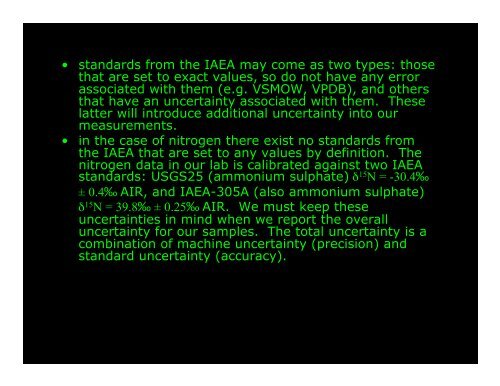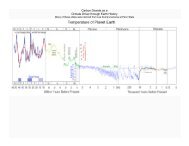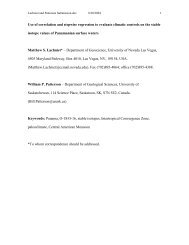Standardization lecture
Standardization lecture
Standardization lecture
You also want an ePaper? Increase the reach of your titles
YUMPU automatically turns print PDFs into web optimized ePapers that Google loves.
• standards from the IAEA may come as two types: those<br />
that are set to exact values, so do not have any error<br />
associated with them (e.g. VSMOW, VPDB), and others<br />
that have an uncertainty associated with them. These<br />
latter will introduce additional uncertainty into our<br />
measurements.<br />
• in the case of nitrogen there exist no standards from<br />
the IAEA that are set to any values by definition. The<br />
nitrogen data in our lab is calibrated against two IAEA<br />
standards: USGS25 (ammonium sulphate) δ 15 N = -30.4‰<br />
± 0.4‰ AIR, and IAEA-305A (also ammonium sulphate)<br />
δ 15 N = 39.8‰ ± 0.25‰ AIR. We must keep these<br />
uncertainties in mind when we report the overall<br />
uncertainty for our samples. The total uncertainty is a<br />
combination of machine uncertainty (precision) and<br />
standard uncertainty (accuracy).







